- This topic has 178 replies, 6 voices, and was last updated 4 years, 6 months ago by
Giulio TiberinI .
-
AuthorPosts
-
10 July 2020 at 17:27 #11923
I also forgot this particular here, I don't know if it's important but I'll add it anyway.
To run the tool over the glass, I got some big suckers, they are also convenient for me because every time I arrive at the dryers and have to detach the tool from the glass, I use them as holds, same thing when I have to reposition it above, given the size of the tool, I avoid damaging it by placing it abruptly.
Probably during the execution of the strokes I unintentionally transmit a little pressure in the central part of the tool, god!
However these days I will also try to do some sessions without touching the central part and let's see if anything changes.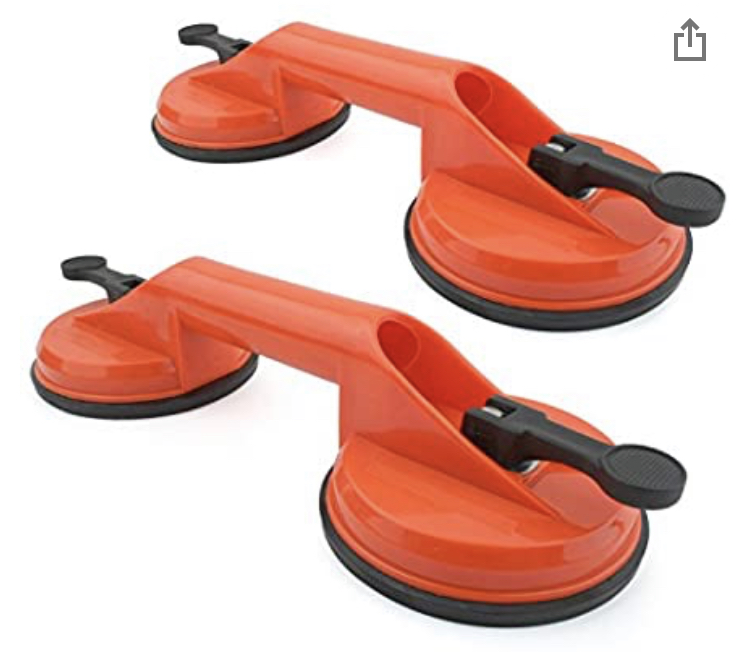
However, I update you!
See you soon.
Luca
10 July 2020 at 19:29 #11924hi Luca, Unfortunately, these are some of the problems for short focal lengths. The curvature is so pronounced that the tool struggles to maintain ( admitted that he got there) a good fit.
Consider that a contact difference of a few thousandths with pitch lasts the remde in those points ineffective.
In this case, contact is better on the central area.
During your work, The figure in the sequence of images has changed and a lot too.
The patina works more in the central area, the mirror above amplifies the excavation in the center to the point that now the center has a radius of curvature a few mm shorter than the edge.
This can be seen in the fact that while the edge in the Ronchi is still intrafocal, relatively far from the fire, the center has passed its roc and is in extra focus.solution:
since so far the center has been excavated, you have to dig the same amount from the periphery and make everything uniform:1-e’ the mirror below is preferable
2-decentralized races, along the circumference of 1/2 the mirror radius, or in any case with the tool center near the circumference that delimits the change of curvature on the mirror.
Runs with little pressure in the center and a few cm offset on the edge.
3- do not exceed the length of the strokes in the longitudinal direction ( penalty edge retorted ) to work the edge, if necessary, position the tool center near the edge and make very short strokes, three to five cm of extension, obviously with constant rotation around the mirror.
4- In this sentence, you will almost exclusively use the tool center, therefore it is not necessary to insist on adaptation, as the form will change from session to session.
5 – every two or three sessions do enough W runs “narrow” to even. then ronchi test to identify the median circumference that delimits the change in curvature, this is our center mirror trajectory for racing.
6- resume from the point 2 until uniformity is achieved.Advice: fa’ treasure of these issues because the essence of Grattavetro e ‘ this, understand mistakes and know how to correct them, but until you try them on your own skin you hardly learn anything. Who does not find himself dealing with these problems, he's not good he's just lucky.
Sure that, you too… something easier to get started no ?

 11 July 2020 at 1:01 #11925
11 July 2020 at 1:01 #11925Luckily I wrote otherwise I went on like this for others 10 sessions.

Sure that, you too… something easier to start with no ?


Massimo, I'm not someone who likes to win easy… it's part of my nature, unfortunately I always look for difficult things to do.

Advice: treasures these issues because this is the essence of Grattavetro, understand mistakes and know how to correct them, but until you try them on your own skin you hardly learn anything. Who does not find himself dealing with these problems, he's not good he's just lucky.
In fact, the best thing is to experience them on your own skin.
Now I just have to put into practice what you advise me hoping not to make disasters.

We'll see what comes out.As soon as I have some results I update and let's see a bit.
Thank you.
See you soon.
Luca
14 July 2020 at 16:47 #11926Hi Massimo,
after a few work sessions you can already notice the first changes in the figure.

I did 4 hours with decentralized runs(tool center passing through the circumference change curvature) and then I compensated with W runs for approx 1 hour(I don't know if it's enough to make it uniform).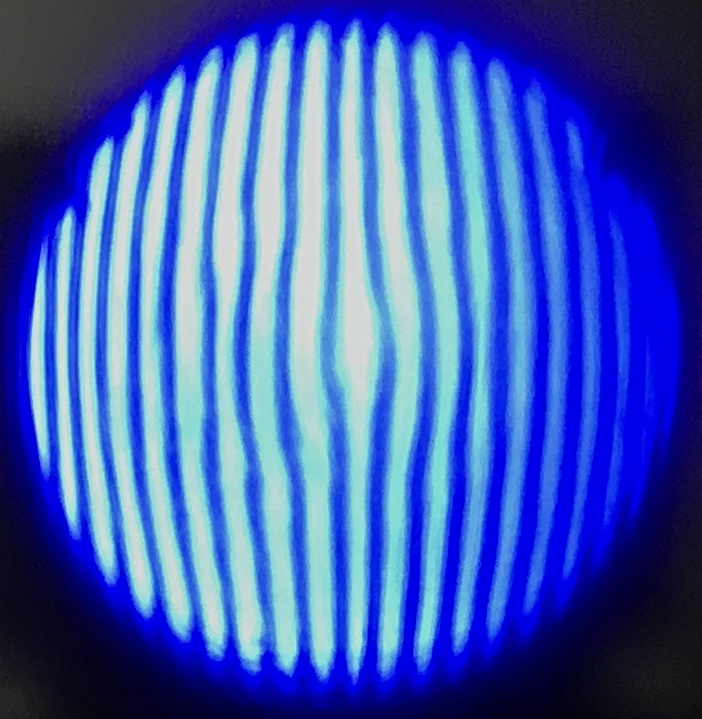
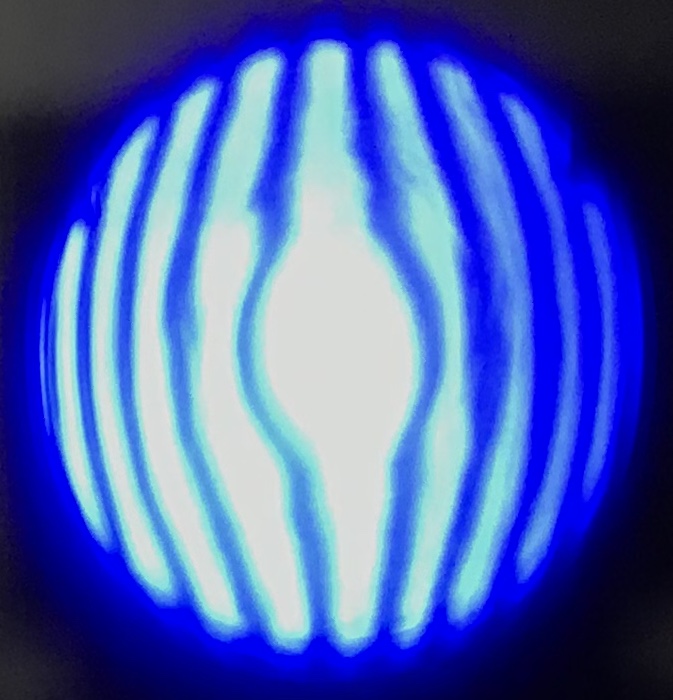
You can see from the photos that the hole has shrunk even if just in the vicinity of it you can see some imperfections in the lines.
Maybe I should insist more on W runs to even out again?
As for the curve change line, according to the photo I should move towards the center of the right mirror?(even though I was convinced that I would progressively move away from the center)
Or I still insist in the same work area for a few sessions?
I'm getting lost!
 14 July 2020 at 21:20 #11928
14 July 2020 at 21:20 #11928Bravo Luca, you are working well !

The figure is evolving exactly as it should. This gives us a first piece of information and that is that the patina is well adapted. It seems obvious but it is an important test, because when the technique ( applied correctly ) does not lead to the desired result “fault” it's just about the patina and its adaptation.Now your crafting will need to be a bit’ more “dynamics”, meaning that you will have to follow the narrowing of the central hole, consequently reducing the radius of the tool center trajectory.
-However, always stay slightly outside, do not go inside or even over the change of curvature with too much precision. At the same time, increases the extension of the stroke as necessary to keep the offset on the mirror edge constant, which must be the same as the previous runs with a wider trajectory radius.
Consequently, as you approach with the trajectory in the center, even the w strokes will have to decrease the amplitude. ( I wouldn't worry too much at the time of small roughness, they will go away slowly, always working with less pressure ) You can think that, when the hole is eliminated, the decentralized and w-shaped strokes coincide in center-to-center runs which will uniform the sphere properly.
This is actually with a full diameter tool, I our case, with smaller tool , the center-on-center races must always have some’ left / right overflow to compensate for the missing surface, in practice it ran to w with the width of the single pass very close to the next one, that is, very “narrow:.
so far the good news ( so to speak
 ), the bad one is that, in this way, we have further reduced the focal length of the mirror, not by much, barely noticeable, but we certainly did not feel the need, since it was already
), the bad one is that, in this way, we have further reduced the focal length of the mirror, not by much, barely noticeable, but we certainly did not feel the need, since it was already
quite complicated on its own
 15 July 2020 at 14:15 #11930
15 July 2020 at 14:15 #11930well Massimo,
I'll try to do as you tell me, I think I have grasped what there is to do.

For W races, you advise me to gradually vary the width as the center approaches,so I should reduce the front overflow right?
I would also like to open a small parenthesis on the cerium oxide used in the work sessions.
Since a good part of the product ends up on the glass edge or even on the support where the glass rests due to the washout, it is counterproductive to recover it and use it again?
thank you, see you soon

Luca
15 July 2020 at 16:35 #11931so I should reduce the front overflow right?
If it were a tool a full diameter and, run to W “narrow”, means reducing overflow and increasing the frequency of segments “come and go”.
In the event of a smaller tool an offset must always be maintained along the entire edge, otherwise the center will work more.
Indicatively in this way:
I would also like to open a small parenthesis on the cerium oxide used in the work sessions.
Since a good part of the product ends up on the glass edge or even on the support where the glass rests due to the washout, it is counterproductive to recover it and use it again?On this I would not be able to answer you fully, Giulio or Mirco should be heard, who know life, death and miracles ( especially miracles ) on materials and their application in the optical field.
I can say that I have always avoided recycling cerium for various reasons, including possible contamination with impurities ( powders , various residues ) but also because I believe that Cerium loses its abrasive effectiveness quite quickly while it is being used, or at least that's my feeling…15 July 2020 at 17:57 #11932Well then in my case, having a full diameter tool, narrow W strokes are fine.

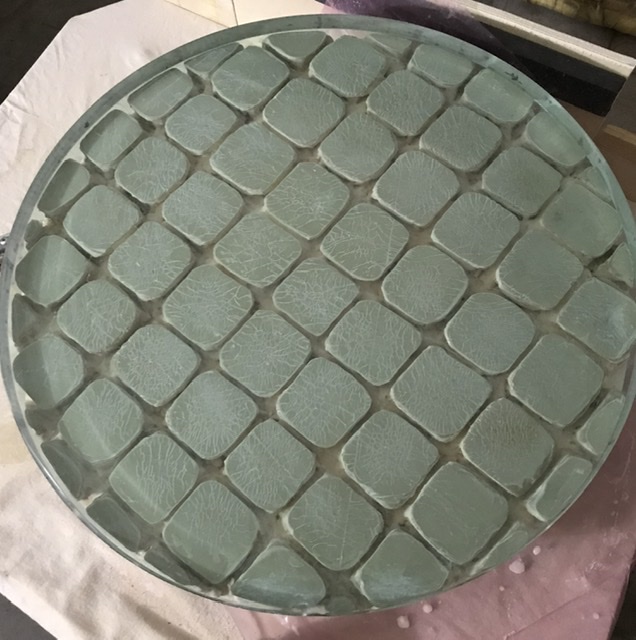
I also had doubts about cerium oxide recycling, both for the impurity and for the effectiveness of the product now used, in fact I just asked why every time I finish a work session I throw away so much.

As soon as I have new images I update.
Thank you.
 15 July 2020 at 18:08 #11933
15 July 2020 at 18:08 #11933Ah here !
 who knows why I was convinced that the tool was smaller… I'm starting to miss
who knows why I was convinced that the tool was smaller… I'm starting to miss 
However the sub-diameter will serve you, not immediately but you will need it all right !
 15 July 2020 at 18:19 #11934
15 July 2020 at 18:19 #11934Well before this tool I had made a smaller one that's why maybe you got confused

However, as soon as I reach the sphere I will prepare the sub-diameters necessary to develop the parabola



 17 July 2020 at 17:54 #11935
17 July 2020 at 17:54 #11935New image improvements regarding the central hole which has shrunk further, on balance it should now be around 8-10 cm.
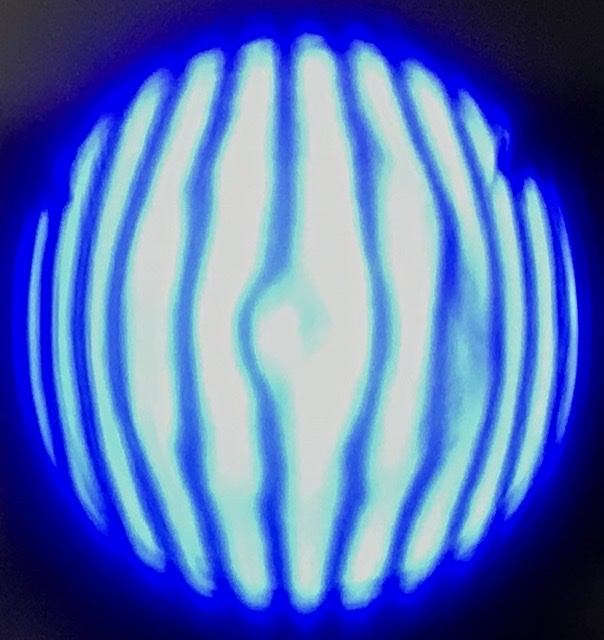
However, I am not satisfied with the external part of the hole (that area that spans about 15-20 cm in diameter mirror), it is as if the defect I had before was regenerating itself or maybe it is my impression.
For sure, the decentralized races are working properly, I'm probably doing the W racing wrong.
When I make left and right moving with a W trajectory I reach over the hips by about 12-13 cm and frontally overflow of about 3-4 cm.
I don't know if that's correct?However, if you look closely, the image looks more like a parabola than a sphere.

See you soon
 18 July 2020 at 17:30 #11936
18 July 2020 at 17:30 #11936Hi guys:
Regarding cerium oxide, it must be said that in fact only what does not work “rolls” on the glass, but it becomes encrusted in pitch, whose compliance also has this purpose of correct retention / replacement of the abrasive granules, facilitated already starting with the adaptation compression that is frequently done with the brushed tool resting on the mirror.Then using the part (mirror or utensil) that you have on the table, brushed with creamy diluted oxide, it gets lost by overflowing and pouring but not a lot; and it is not convenient to recover it.
(for example the term “creamy” it basically means diluting from session to polishing session, one tablespoon of oxide at a time, with two, or max three tablespoons of water).
Equally it is better to consume all the spoonful of product that has been diluted in the jar where the brush is dipped, and repeat the new dilution at each exhaustion or at the beginning of the work session.
These tips apply to manual processing. As with the turntable the dilution is much greater (having a consistency like whey) because the mechanical work of rotation, much more marked than simple “and e vieni” manual, makes up for efficiency, consuming, however, perhaps the same amount of oxide over time, given the higher dilution.
19 July 2020 at 13:02 #11938hello Giulio, as always you are clear and exhaustive in the answers you give , thank you very much.

So I take the decision to discard the used cerium as positive, also because if I have to go back to having signs again due to a polluted compound, it is better not to.
When I started polishing the mirror some marks (really bad signs) I got them from cerium, in fact now that I sift the product before the work sessions I feel much better and I am calmer.
After each sieving I always find some compost granules that are certainly not equivalent to 3.5 microns declared in the package.
Some even have dimensions that are around 1 mm.
However, the important thing is to always find a solution to proceed, the rest comes by itself.
 14 September 2020 at 10:41 #11968
14 September 2020 at 10:41 #11968Hello forum,
I update you on the scheme reached after a few work sessions.
First of all it seems to me that the screen returned by Ronchi has improved a lot, the lines are much smoother than when I started the job, even the roughness on the glass is absent.
Now I have come to get this figure but I cannot advance from this position, I'm probably working the wrong way.
You can see a small hole in the center which in my opinion turns out to be about 2-3 cm or maybe smaller I don't know.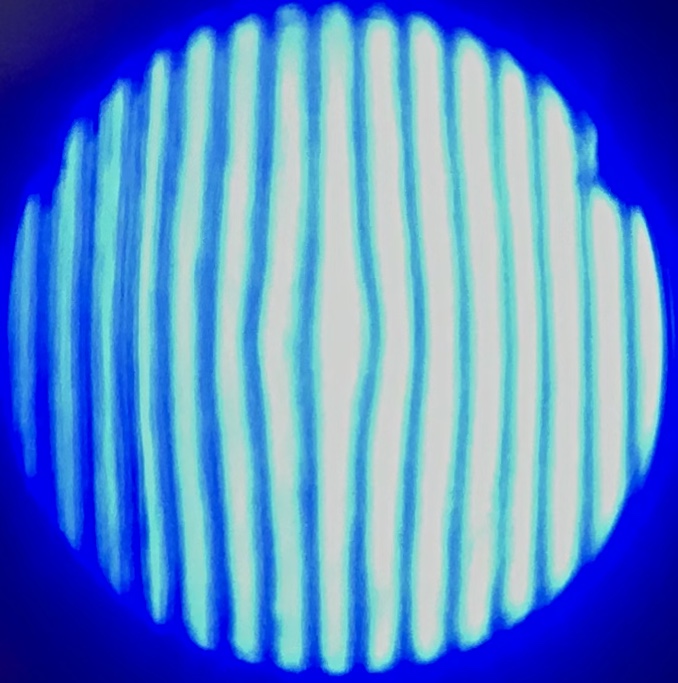


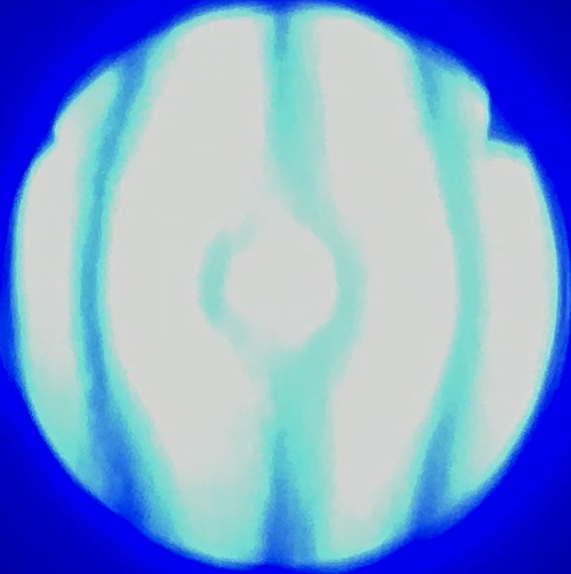
So I did the last few sessions like this :
I tried with decentralized runs of approx 3 cm, then 2 cm then 1 until you get to run center-to-center runs but with every Ronchi performed there has been no improvement.
How do I exactly intercept the median of the camber change?
 14 September 2020 at 15:16 #11971
14 September 2020 at 15:16 #11971at this point I would aim straight for the sphere, with mirror below, Corsica 1/3 COC and slight right-left overflow ( three-four cm ) until regularization, always with the foresight to verify and optimize the adaptation to each session.
For the Ronchi try to decrease the intensity of the LED with a narrower slot, or to act on the intensity adjustments, exposure and contrast of the camera / webcam you are using. -
AuthorPosts
- You must be logged in to reply to this topic.